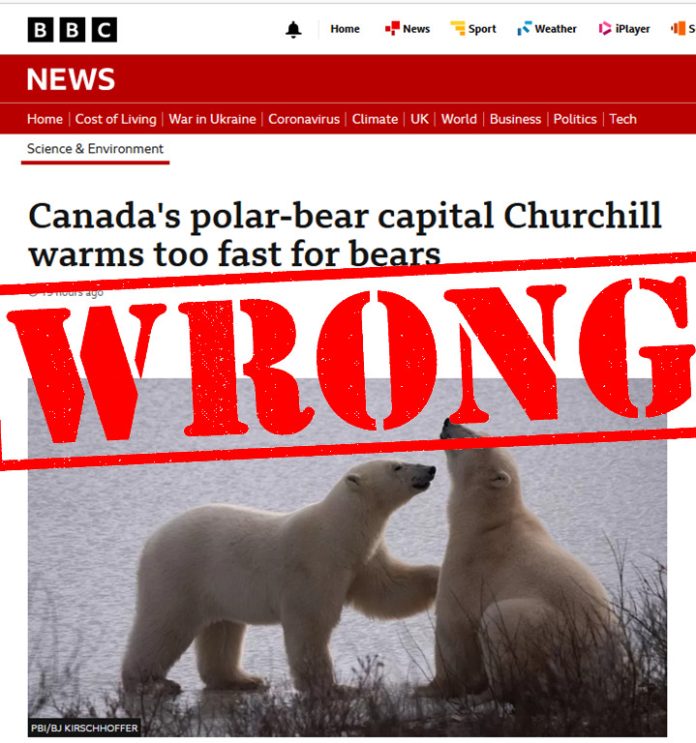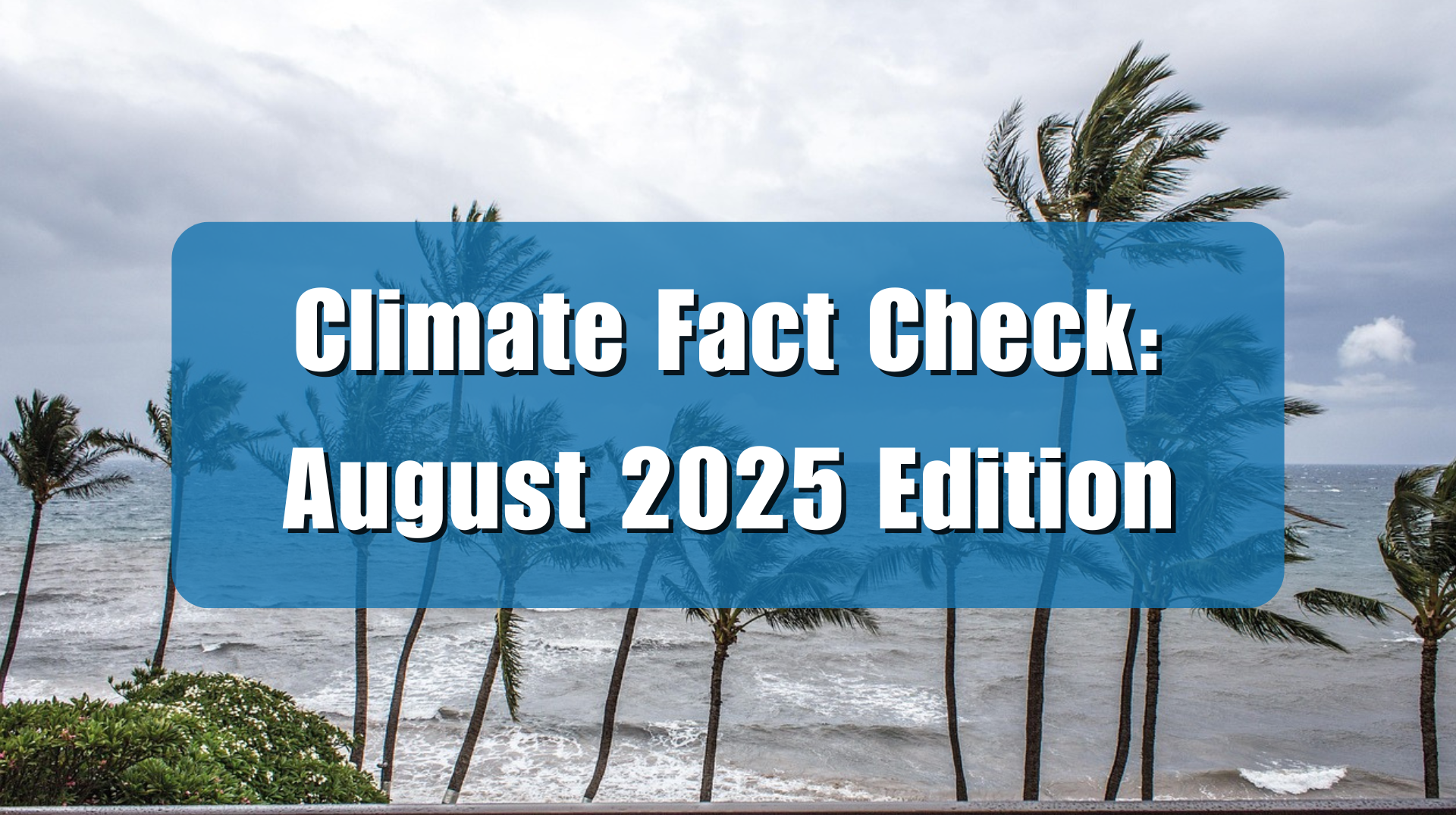By Dr. Susan Crockford, reposted from polarbearscience.com
Another pronouncement from conservation activists at Polar Bears International taken without a single check of facts makes the BBC look ineffective and gullible.

The photo above of a ‘green dot’ bear was taken 10 November 2022 by a Churchill resident. Bears released from the ‘polar bear jail’ when there is enough sea ice for them to resume hunting are marked with a green dot.
From a BBC article today (18 December 2022), ‘Canada’s polar-bear capital Churchill warms too fast for bears‘:
But as the polar bear becomes an icon of climate change, the bears’ plight in Churchill embodies the inextricable link between preserving the natural world and fighting global warming. The polar-bear capital of the world is simply getting too warm for polar bears. …
“Looking over the last couple of decades, it forms later and later and it breaks up earlier and earlier in spring,” Dr Flavio Lehner, of conservation charity PBI, says.
“So this season in between – where the bears are on land and can’t take advantage of those hunting opportunities – that’s is getting longer and longer, with warming.”
The simple fact is that sea ice in Western Hudson Bay, where Churchill is located, has not been declining more and more with rising CO2 emissions, according to data published by polar bear specialists (e.g. Castro de la Guardia et al. 2017).
Since 2015, there has been only one ‘late’ freeze-up year (2016)–but five very early ones–and at most one relatively early breakup year (with some bears ashore in June). This year (2022) freeze-up was about as early as it was in the 1980s, as was the case in 2017, 2018, 2019, and 2020, as the chart below indicates (dark blue is more ice than usual compared to 1991-2020). Breakup happened in July in 2022, so also not early.

In other words, there has been no escalation of poor Churchill-area sea ice conditions in recent years as stated by the BBC.
The BBC and others only get away with such blatantly false statements because polar bear specialists simply do not update their published data on Western Hudson Bay sea ice or condition of bears. Data for ice is now 7 years out of date and information on the condition of the bears is decades out of date.
Moreover, the models predicting the demise of polar bears by 2100 are implausible prophesies based on discredited RCP8.5 scenarios that assume an unrealistic 500% increase in coal and a 60C rise in global temperature (Hausfather and Peters 2020) and out-of-date information on WH bears (Molnar et al. 2010, 2020).
This bit of PR posing as science comes as PBI’s ‘chief scientist’ announces his retirement from the organization. His comments are telling about why he quit the US Geological Survey in 2010 to join PBI:
I originally planned to stay with PBI for about five years—thinking that, by then, societies would have moved toward more sustainable CO2 emissions pathways and the future for polar bears would be more secure. I had many reasons to be optimistic, but boy was I wrong. I didn’t fully appreciate the power of the denial movement. I also didn’t imagine that our policy leaders, many of whom are smart people, would choose to literally ruin the world in exchange for the further enrichment of a very few. So, the initial five years stretched into more than a decade—and we still have far to go.
The announcment states that Amstrup “plans to step up to an emeritus position while passing the baton to two hand-picked successors, Dr. John Whiteman and Dr. Flavio Lehner.” Hand-picked, by Amstrup, means more of the same from PBI.
It’s no wonder the BBC promotion piece for PBI includes so many statements from Lehner, who is not a polar bear biologist but an activist climate scientist. Like the BBC, I expect Lehner also believes everything that Amstrup says without checking for himself.
References
Castro de la Guardia, L., Myers, P.G., Derocher, A.E., Lunn, N.J., Terwisscha van Scheltinga, A.D. 2017. Sea ice cycle in western Hudson Bay, Canada, from a polar bear perspective. Marine Ecology Progress Series 564: 225–233. http://www.int-res.com/abstracts/meps/v564/p225-233/
Hausfather, Z. and Peters, G.P. 2020. Emissions – the ‘business as usual’ story is misleading [“Stop using the worst-case scenario for climate warming as the most likely outcome — more-realistic baselines make for better policy”]. Nature 577: 618-620
Molnár, P.K., Bitz, C.M., Holland, M.M., Kay, J.E., Penk, S.R. and Amstrup, S.C. 2020. Fasting season length sets temporal limits for global polar bear persistence. Nature Climate Change. https://doi.org/10.1038/s41558-020-0818-9
Molnar, P.K., Derocher, A.E., Theimann, G., and Lewis, M.A. 2010. Predicting survival, reproduction and abundance of polar bears under climate change. Biological Conservation 143:1612-1622. http://www.math.ualberta.ca/~mlewis/Publications%202010/Molnar-Derocher-Thiemann-Lewis.pdf




















